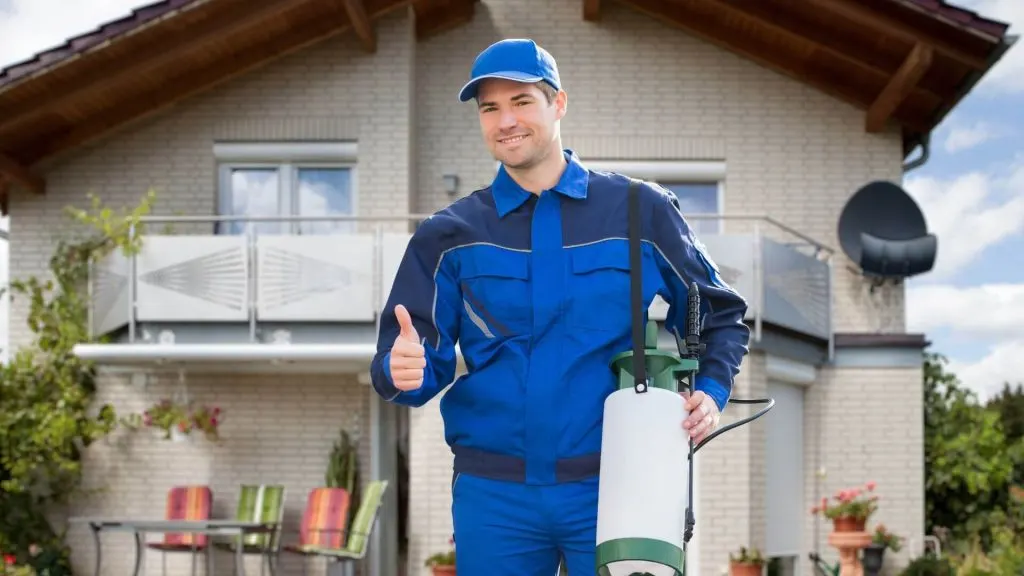Pests invading your home can be a homeowner’s worst nightmare. From creepy crawlies like ants and spiders to larger intruders like rodents and raccoons, understanding how these pests infiltrate your sanctuary is the first step in effective pest management. In this comprehensive guide, we’ll delve into the various ways pests can find their way into your home and provide practical solutions to evict them. From prevention to eradication, you’ll learn the strategies needed to keep your home pest-free.

1. Common Entry Points
Pests, no matter their size, often utilize common entry points to invade your home. These entry points can include gaps in windows and doors, cracks in the foundation, and poorly sealed vents. Even small holes in your walls or gaps in the attic can serve as highways for pests. To prevent their entry, conduct a thorough inspection of your home’s exterior and interior, sealing any openings you find. Weather stripping and door sweeps are excellent tools to reinforce the entrances.
2. Climbing and Flying Pests
Insects like ants, roaches, and even termites are skilled climbers and flyers. They can gain access through open windows, torn screens, and damaged roof tiles. Regularly inspect and repair screens, windows, and any exterior damage to your home’s structure. Installing screens on attic vents and chimney caps can also prevent flying and climbing pests from entering your home.
3. Hidden Plumbing and Drainage Issues
Moisture attracts pests like no other. Leaky pipes clogged drains, and faulty drainage systems create a haven for pests like silverfish, roaches, and even rodents. Regularly inspect your plumbing for leaks and drainage systems for clogs. Fixing these issues promptly can help prevent pest infestations linked to moisture.
4. Eradicating Rodents
One of the most challenging pest problems homeowners face is rodent infestations. These clever critters can enter your home through the tiniest of openings. To eradicate rodents effectively, it’s essential to use a combination of traps and deterrents. Snap traps, live traps, and electronic traps can help catch rodents already inside. Meanwhile, using deterrents like peppermint oil, which rodents dislike, can keep them from entering in the first place. Sealing all potential entry points, such as gaps around pipes and vents, is crucial in keeping rodents out.
5. Landscaping and Outdoor Attractants
Your home’s exterior plays a significant role in pest prevention. Landscaping elements like overgrown bushes and trees can provide convenient bridges for pests to access your home. Ensure your landscaping is well-maintained, keeping vegetation trimmed and away from the house. Additionally, remove debris, woodpiles, and other outdoor attractants that pests may use as shelter.
6. Proper Food Storage
Another critical factor in pest prevention is proper food storage. Insects and rodents are always on the lookout for accessible food sources. Invest in airtight containers for pantry items, and don’t leave pet food out overnight. When making your favorite family-friendly recipes, make sure to regularly clean your kitchen to eliminate crumbs and spills that can attract pests.
7. Regular Cleaning and Maintenance
Maintaining a clean and clutter-free home is a powerful deterrent against pests. Regularly vacuuming, sweeping, and wiping down surfaces can help eliminate crumbs and debris that attract insects. In addition, a clutter-free environment leaves fewer hiding spots for pests to thrive.
8. Professional Pest Control
In some cases, despite your best efforts, pests may still find their way in. When the infestation becomes overwhelming or poses health risks, it’s time to call in professional pest control services. These experts have the knowledge, tools, and experience to assess the situation and implement targeted strategies to eliminate pests safely.
9. Environmental Considerations
In our increasingly eco-conscious world, many homeowners are looking for environmentally friendly pest control options. Integrated Pest Management (IPM) is a sustainable approach that combines various techniques like biological control and habitat modification to manage pests effectively while minimizing the use of chemicals. Consider discussing these options with a pest control professional.
10. Ongoing Vigilance
Finally, staying vigilant is crucial in the battle against pests. Regular inspections and maintenance should be part of your homeowner’s routine. Don’t wait for a full-blown infestation before taking action. By identifying and addressing pest issues early, you can save yourself time, money, and the headache of dealing with a full-scale invasion.
Although pests entering your house can be a recurring and annoying issue, you can prevent them with the correct information and techniques. You may considerably lower the chance of infestations by being aware of common access sites, taking precautions, efficiently removing rats, and keeping your home clean and well-maintained. It’s a never-ending war, so keep watch and be prepared to respond when necessary. You can protect yourself and your family against pests by following these procedures to make your home.

Jessi is the creative mind behind The Coffee Mom, a popular blog that combines parenting advice, travel tips, and a love for all things Disney. As a trusted Disney influencer and passionate storyteller, Jessi’s authentic insights and relatable content resonate with readers worldwide.
